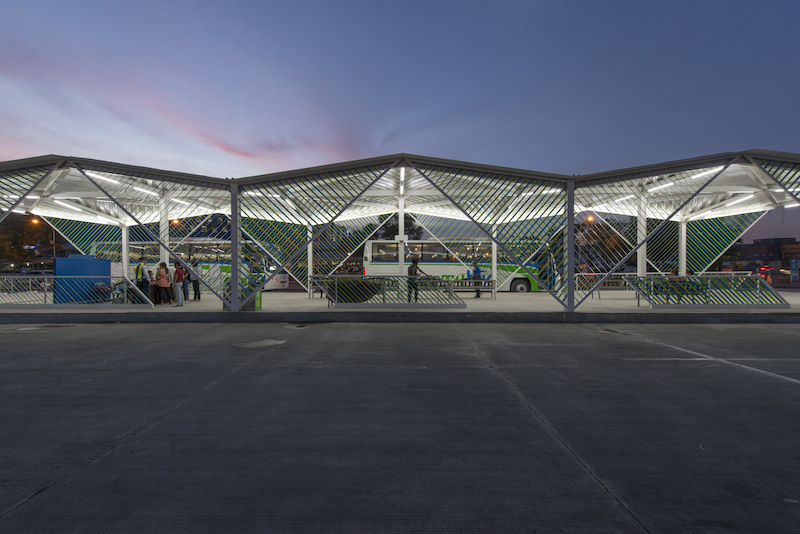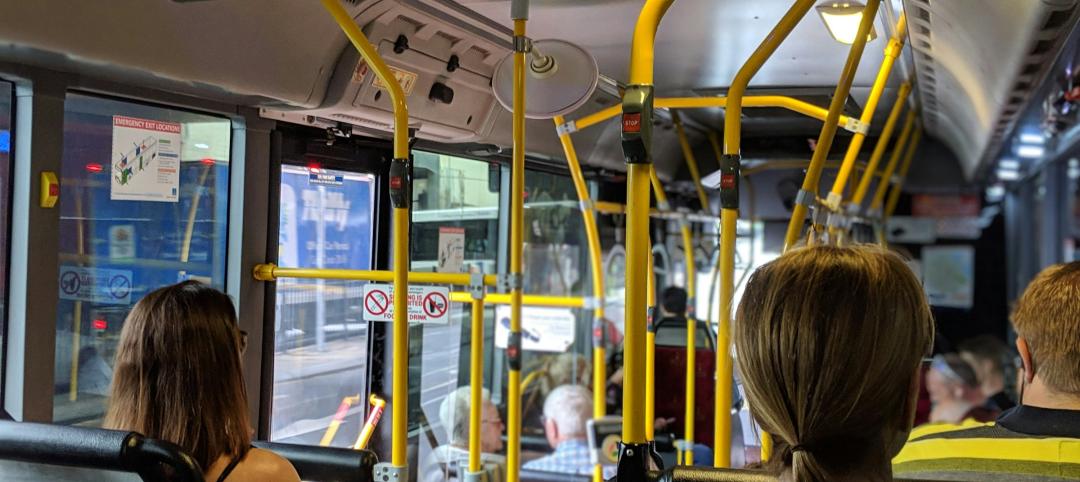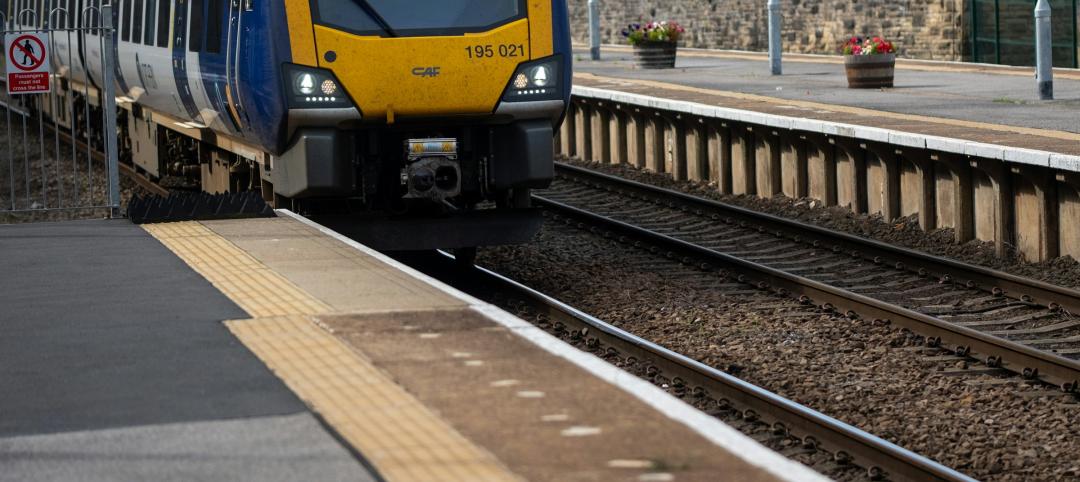By March of next year, Cebu, the oldest and second-largest city in the Philippines, should have its first bus rapid transit system (BTR) completed.
The system stretches from the Cebu International Airport to the city’s business district, and will connect four separately governed cities, BRT is expected to serve between 15% and 25% of the area’s 3.5 million population, and alleviate congestion for nearly one million citizens.
The 19 bus stations along the BRT’s route—five of which have been assembled and are operating—were designed by Brooklyn, N.Y.-based Carlos Arnaiz Architects (CAZA), a six-year-old firm with offices in Bogota, Colombia, and Manila, Philippines. Its Principal and Founder, Carlos Arnaiz, was born in the Philippines, and is a citizen of Colombia.
In an interview with BD+C, Arnaiz said that the decision to move forward on this project reflects how the Philippines is “reaping the benefits of good government” over the last several years, and has emerged as one fastest-growing economies in the region.
The BRT is a public-private partnership that includes the World Bank, the City of Cebu, and the real estate development firm SM Investments. About 3½ years ago, the World Bank commissioned a transportation study that WSP|Parsons Brinckerhoff completed about 18 months ago.
CAZA was brought on to design the bus stations as well as the surrounding street functions, such as lighting and benches, and road improvements. Arnaiz says that he analyzed the station design of systems serving other metros, including Bogota’s TransMilleno.
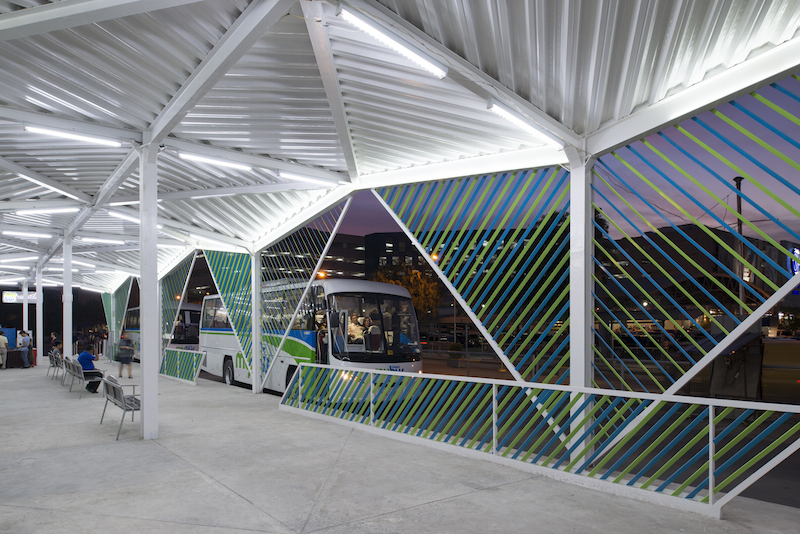 The exterior design of the bus stations is a visual reminder of Cebu's reputation for basket weaving and rattan furniture. Image courtesy of CAZA
The exterior design of the bus stations is a visual reminder of Cebu's reputation for basket weaving and rattan furniture. Image courtesy of CAZA
“But our system is quite different, and we pretty much had to start from scratch,” he says.
CAZA designed four different station types, the components for each were made in a factory and are assembled onsite. The stations needed to be able to respond to Cebu’s two climate conditions—extreme heat and extreme rain. So CAZA designed the stations to provide shading and ventilation. It also angled the stations’ roofs and elevated their platforms slightly from street level to prevent flooding. (Stormwater is redirected into nearby retention tanks.)
“The biggest challenge was balancing the pragmatic with the need for cultural expression,” he says. Modular production and assembly were chosen for their affordability (the budget for this project is less than US$3 million) and performance. And the stations are architecturally connected to the city by the design of their louver screens that recalls Cebu’s renown for basket weaving, textiles, and furniture. (Curbed recently posted a story about this project with the headline “Bus Stops or Art Installation?”
Arnaiz hopes this project might lead to other transit-oriented work for his firm, which is currently involved in a hotel project in the Philippines and an office tower in Manila.
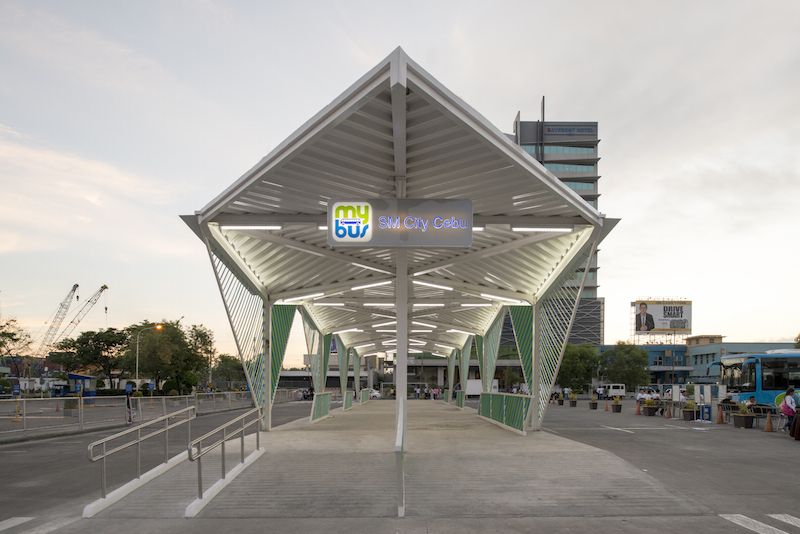 The roof of the bus stops is angled to deflect the heavy rain that Cebu experiences. The stormwater is directed to retention tanks. Image courtesy of CAZA
The roof of the bus stops is angled to deflect the heavy rain that Cebu experiences. The stormwater is directed to retention tanks. Image courtesy of CAZA
Related Stories
Adaptive Reuse | Jul 12, 2024
Detroit’s Michigan Central Station, centerpiece of innovation hub, opens
The recently opened Michigan Central Station in Detroit is the centerpiece of a 30-acre technology and cultural hub that will include development of urban transportation solutions. The six-year adaptive reuse project of the 640,000 sf historic station, created by the same architect as New York’s Grand Central Station, is the latest sign of a reinvigorating Detroit.
Transit Facilities | Jul 10, 2024
Historic Fresno train depot to be renovated for California high speed rail station project
A long-shuttered rail station in Fresno, Calif., will be renovated to serve as the city’s high speed rail (HSR) station as part of the California High-Speed Rail Authority system, the nation’s first high speed rail project. California’s HSR system will eventually link more than 800 miles of rail, served by up to 24 stations.
Transit Facilities | Jan 22, 2024
Top 25 Transit Facility Construction Firms for 2023
The Walsh Group, Clark Group, Hensel Phelps, Skanska USA, and Hill International top BD+C's ranking of the nation's largest transit facility general contractors and construction management (CM) firms for 2023, as reported in the 2023 Giants 400 Report. Note: This ranking includes construction revenue for work related to bus terminals, rail terminals, and transit stations.
Transit Facilities | Jan 22, 2024
Top 40 Transit Facility Engineering Firms for 2023
AECOM, Jacobs, EXP, WSP, and Arup head BD+C's ranking of the nation's largest transit facility engineering and engineering/architecture (EA) firms for 2023, as reported in the 2023 Giants 400 Report. Note: This ranking includes design revenue for work related to bus terminals, rail terminals, and transit stations.
Transit Facilities | Jan 22, 2024
Top 40 Transit Facility Architecture Firms for 2023
Perkins&Will, HDR, Gensler, Skidmore, Owings & Merrill, and HNTB top BD+C's ranking of the nation's largest transit facility architecture and architecture engineering (AE) firms for 2023, as reported in the 2023 Giants 400 Report. Note: This ranking includes design revenue for work related to bus terminals, rail terminals, and transit stations.
Sponsored | BD+C University Course | Jan 17, 2024
Waterproofing deep foundations for new construction
This continuing education course, by Walter P Moore's Amos Chan, P.E., BECxP, CxA+BE, covers design considerations for below-grade waterproofing for new construction, the types of below-grade systems available, and specific concerns associated with waterproofing deep foundations.
Transit Facilities | Dec 4, 2023
6 guideposts for cities to create equitable transit-oriented developments
Austin, Texas, has developed an ETOD Policy Toolkit Study to make transit-oriented developments more equitable for current and future residents and businesses.
Giants 400 | Aug 22, 2023
Top 115 Architecture Engineering Firms for 2023
Stantec, HDR, Page, HOK, and Arcadis North America top the rankings of the nation's largest architecture engineering (AE) firms for nonresidential building and multifamily housing work, as reported in Building Design+Construction's 2023 Giants 400 Report.
Giants 400 | Aug 22, 2023
2023 Giants 400 Report: Ranking the nation's largest architecture, engineering, and construction firms
A record 552 AEC firms submitted data for BD+C's 2023 Giants 400 Report. The final report includes 137 rankings across 25 building sectors and specialty categories.
Giants 400 | Aug 22, 2023
Top 175 Architecture Firms for 2023
Gensler, HKS, Perkins&Will, Corgan, and Perkins Eastman top the rankings of the nation's largest architecture firms for nonresidential building and multifamily housing work, as reported in Building Design+Construction's 2023 Giants 400 Report.


